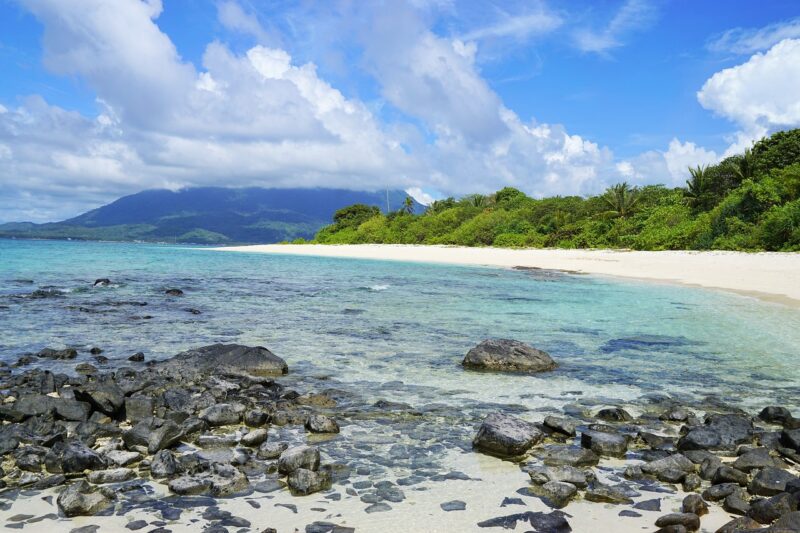The Most Puzzling Discoveries Found in Deserted Islands That Left Scientists Completely Stunned
November 17, 2024

Islands have always captivated the human imagination, often seen as remote, mystical locations filled with secrets waiting to be uncovered. Some of these deserted islands, seemingly isolated from the rest of the world, have revealed discoveries that have puzzled scientists and challenged our existing understanding of biology, archaeology, and even climate change. In this article, we’ll delve into some of the most astonishing findings on deserted islands that have left scientists completely stunned.
1. The Enigmatic Moai of Easter Island
Easter Island, or Rapa Nui, is famous for its giant stone statues called moai. These statues, carved from volcanic tuff, are scattered across the island, with the largest weighing around 75 tons. Their purpose remains a mystery: were they intended to honor ancestors, or did they serve a more profound spiritual significance?
Despite being created by a small population, the sheer scale of these giant sculptures raises questions about the societal organization and resources needed for such monumental works. Recent research also suggests that the decline of the moai culture aligns with ecological decline and resource depletion, provoking debates about the sustainability of this civilization.
2. The Discovery of Giant Extinct Birds
On the deserted islands of Mauritius and Réunion, paleontologists have uncovered fossilized remains of gigantic flightless birds known as the dodo and the aepyornis, or elephant bird. The dodo, a roughly one-meter-tall bird that went extinct in the 17th century, has become a symbol of extinction due to human activity. Its remains raise questions about its island habitat and how its isolated environment shaped its evolution.
The aepyornis, even larger than the dodo, was believed to have stood up to 3 meters tall and laid the largest egg of any bird species. Studies of these extinct birds provide invaluable insights into island ecosystems and demonstrate how isolation can lead to unique evolutionary paths.
3. Subterranean Ecosystems of Socotra Island
Socotra Island, part of Yemen, is often referred to as the “Galápagos of the Indian Ocean” due to its extraordinary biodiversity. Over one-third of its plant life is found nowhere else on Earth, including the surreal dragon blood tree.
However, recent explorations in the island’s caves have revealed subterranean ecosystems teeming with life. Unique species of fish, insects, and bacteria have adapted to live in complete darkness, highlighting the resilience of life and the evolutionary marvels of isolated environments. Understanding these adaptations can help scientists learn more about extremophiles and the potential for life in other planets in our solar system.
4. The Lost Continent of Zealandia
Beneath the South Pacific lies Zealandia, a submerged landmass that some scientists suggest is a lost continent. This area includes New Zealand and New Caledonia and is approximately 93% underwater. Geological surveys of the region reveal insights into ancient tectonic movements and how island formations evolve over time.
The discovery of Zealandia has unique implications for our understanding of plate tectonics and continental drift. If definitively categorized as a continent, it would rewrite geographical textbooks and challenge preconceived notions about how landmasses interact and evolve.
5. The Ancient Rock Art of Seychelles
Recent archaeological expeditions to the Seychelles have uncovered ancient rock art, some dating back thousands of years. This art offers a fascinating glimpse into the lives of past civilizations that once inhabited these islands. The engravings depict hunting scenes, rituals, and daily life, creating a narrative of island inhabitance and cultural evolution.
Scientists have been stunned by the complexity of these artistic expressions, suggesting a well-developed civilization that thrived on these scattered islands. The ongoing analysis of this rock art may reshape our theories of human migration and settlement patterns in the Indian Ocean region.
6. The Biodiversity Hotspot of the Galápagos Islands
The Galápagos Islands have long been recognized for their unique biodiversity and contribution to Charles Darwin’s theory of evolution. The isolated environment led to the development of distinct species, including the famous Galápagos tortoises and finches with varied beak sizes adapted to different food sources.
In recent years, scientists have struggled to document the rapid evolution and extinction rates of species in response to human activity and climate change. The islands serve as a barometer for global environmental shifts, making ongoing research critical for understanding the impacts of climate change on isolated ecosystems.
Conclusion
The discoveries found on deserted islands continuously challenge our understanding of biology, anthropology, and geology. From ancient civilizations and unique ecosystems to lost continents and mysterious rock art, these isolated environments provide invaluable insights into the past and present of our planet.
As we explore and decipher the mysteries of deserted islands, we not only learn about the complexities of life on Earth but also recognize the importance of preserving these unique habitats for future generations. Continued research and conservation efforts are essential for safeguarding the wonders that remain hidden in the world’s most remote locations.







